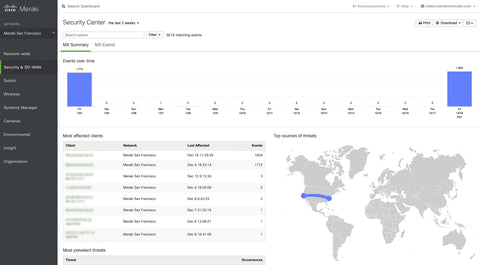Introduction
In today's interconnected world, network security is of utmost importance. Protecting your data from unauthorised access, threats, and breaches is critical for maintaining the confidentiality, integrity, and availability of your information. In this guide, we will provide you with an introduction to network security and share essential tips to help safeguard your data. By implementing these measures, you can establish a robust network security framework and mitigate potential risks.
- Implement Strong Access Control Measures:
Enforce strong access control policies to ensure that only authorised individuals have access to your network and sensitive data. Implement strong passwords, multi-factor authentication, and role-based access controls to restrict access to authorised users. Regularly review and update user access privileges to prevent unauthorised access.
- Use Firewall Protection:
Deploy firewalls as the first line of defence in your network security strategy. Firewalls monitor and filter incoming and outgoing network traffic, blocking unauthorised access and potential threats. Configure firewalls to permit only necessary traffic and regularly update firewall rules to adapt to evolving security requirements.
- Employ Intrusion Detection and Prevention Systems (IDPS):
Implement IDPS to monitor network traffic, detect suspicious activities, and prevent intrusions. Intrusion Detection Systems (IDS) identify potential security breaches, while Intrusion Prevention Systems (IPS) actively block or mitigate threats in real-time. Regularly update and fine-tune these systems to ensure effective threat detection and prevention.
- Regularly Update and Patch Systems:
Keep your network devices, operating systems, applications, and security software up to date with the latest patches and security updates. Software vendors frequently release patches to address vulnerabilities and security weaknesses. Regularly apply these updates to safeguard your network against known threats.
- Encrypt Sensitive Data:
Encrypt sensitive data to protect it from unauthorised access during transmission and storage. Use strong encryption algorithms and secure protocols (e.g., SSL/TLS) to ensure data confidentiality. Implement encryption for sensitive information such as passwords, financial data, and customer records.
- Conduct Regular Security Audits and Assessments:
Perform regular security audits and assessments to identify vulnerabilities and potential weaknesses in your network infrastructure. Conduct penetration testing to simulate real-world attack scenarios and evaluate the effectiveness of your security measures. Address identified vulnerabilities promptly to maintain a secure network environment.
- Educate and Train Users:
Educate your employees and network users about best practices for network security. Promote awareness of phishing attacks, social engineering tactics, and safe browsing habits. Regularly train users on password hygiene, identifying suspicious emails, and reporting security incidents promptly. User awareness is a vital component of a strong security culture.
- Backup and Disaster Recovery:
Regularly back up your critical data and develop a robust disaster recovery plan. Implement secure backup solutions and test data restoration processes to ensure data availability in the event of data loss or system failure. Offsite backups provide an additional layer of protection against physical damage or theft.
- Monitor Network Traffic and Log Activity:
Implement network monitoring tools to track network traffic, detect anomalies, and investigate potential security incidents. Enable logging and monitoring of network devices, servers, and critical systems to track user activity and identify potential security breaches. Regularly review logs to identify suspicious patterns or unauthorised access attempts.
- Stay Informed and Updated:
Keep abreast of the latest security threats, trends, and best practices in network security. Stay informed about emerging technologies, vulnerabilities, and industry-specific security requirements. Participate in security forums, follow reputable security blogs, and engage with cybersecurity communities to stay updated on evolving threats and mitigation strategies.
Conclusion
Network security is crucial for protecting your data and ensuring the integrity and availability of your network resources. By implementing strong access controls, utilising firewalls and intrusion detection systems, updating and patching systems, encrypting sensitive data, and conducting regular audits, you can establish a robust network security framework. Combine these measures with user education, backup and disaster recovery planning, network monitoring, and staying informed about the latest security trends to maintain a resilient and secure network environment.

